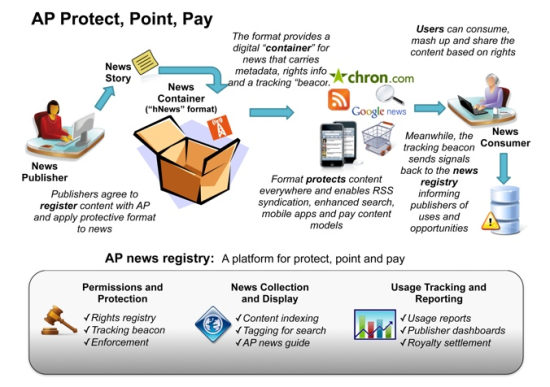Ars Technica: Inside the AP's plan to "wrap" its content
 Friday, July 31, 2009 at 3:51PM
Friday, July 31, 2009 at 3:51PM The following was published by Nate Anderson for ARS Technica on 28 July 2009:
The Associated Press last week rolled out its brave new plan to "apply protective format to news." The AP's news registry will "tag and track all AP content online to assure compliance with terms of use," and it will provide a "platform for protect, point, and pay." That's a lot of "p"-prefaced jargon, but it boils down to a sort of DRM for news—"enforcement," in AP-speak.
For the complete article go to DRM for news? Inside the AP's plan to "wrap" its content. And see in particular the technical specifications for hNews, an extension of hAtom.
For a comparable publication, see Author-Level Digital Rights Management and the Common Point Authoring System: Protecting Information Exchange.


Reader Comments